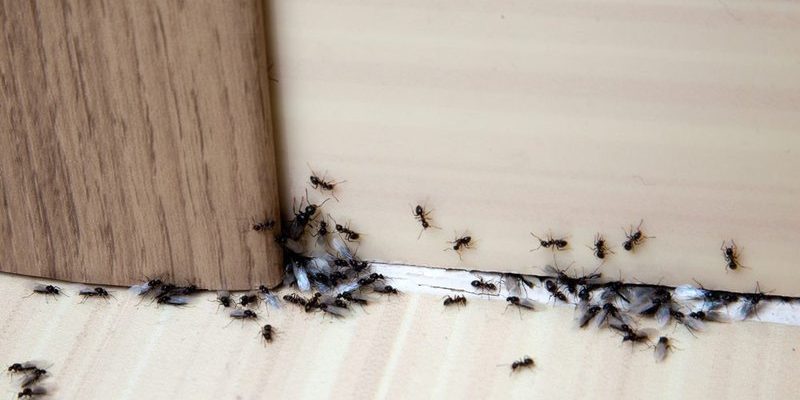
Let’s break this down. Repairing interior door hardware after a pest infestation—like ants making themselves cozy in your door latch—might seem daunting at first. But fear not! With a bit of patience and some simple tools, you can reclaim your door’s functionality without calling in the pros. I’ll guide you through the steps to not only clear out the ants but also fix the damage they might have done along the way.
Identifying the Problem: Signs of Pest Infestation
Before jumping into repairs, it’s essential to assess the situation. Start by checking your door hardware for signs of an infestation. If you notice any *tiny trails of ants*, especially around the hinges or lock area, that’s a clear indicator. You might also find debris or small bits of dirt.
Another thing to look for is *sticky residue* around the door mechanism. This could be the ants’ leftover pheromones, which are like little signposts for their friends to follow. If you spot any of these signs, it’s time to act.
It’s also a good idea to inspect the surrounding areas. Sometimes ants can sneak in from nearby *cracks or crevices*, so explore the door frame and walls too. Getting to the root of the problem helps prevent future infestations.
Gathering Your Tools and Materials
Now that you know what you’re dealing with, it’s time to gather the right tools. You’ll want to have:
- Screwdriver: Depending on your door hardware, you might need a flathead or Phillips screwdriver.
- Cleaning supplies: This includes soap, water, and a cloth for wiping down surfaces.
- Insecticide spray (optional): If ants have taken over, a mild spray can help eliminate the issue.
- Lubricant: A silicone spray or WD-40 will help keep things running smoothly once you’ve repaired them.
Having everything you need on hand makes the process smoother and quicker. You don’t want to be halfway through the repair and realize you’re missing something crucial.
Cleaning Out the Infestation
Let’s dive into the actual cleaning. Start by removing any visible ants from the door mechanism. Use a small brush or a vacuum cleaner with a nozzle to get rid of the pesky critters. If you feel comfortable, you can also disassemble parts of the hardware for a more thorough cleaning.
Once you’ve cleared out the ants, mix some warm, soapy water. Take your cloth and gently wipe down the lock, latch, and surrounding areas. This step not only cleans but also removes any pheromone trails that ants may have left behind.
If you opted for insecticide, spray it around the *entry points*—not directly on the hardware—just to deter future visitors. However, be careful; you don’t want any harmful residue on your door mechanism.
Inspecting and Repairing Damaged Hardware
After cleaning comes the inspection. Look closely at the hardware—the latch, the strike plate, and the hinges. Are any parts bent or broken? Sometimes, ants can nest in hinges or push against the latch, causing them to misalign.
If you find any damaged parts, consider replacing them. This is generally easier than trying to fix something that’s past its prime. You can usually find compatible hardware in hardware stores or online. Just make sure it fits your door type and style.
Once you have the replacements, follow these steps to repair it:
1. Remove the hardware: Use your screwdriver to take out any damaged components carefully.
2. Install new parts: Place the new latch or strike plate in its spot and secure it with screws.
3. Reattach hinges: If you need to replace hinges, do this last to ensure everything aligns properly.
Reassembling and Lubricating the Mechanism
With all the repairs made, it’s time to put everything back together. Start by reattaching the door handle or knob. Make sure it feels secure and operates smoothly.
Next, apply a small amount of lubricant to the moving parts of the hardware. This could include the latch, hinges, and any other mechanisms that slide or rotate. Lubrication helps prevent future wear and tear, keeping your door easy to operate.
You might be wondering why lubrication matters. Well, just like a car needs oil to run efficiently, your door’s hardware needs some love to keep functioning well.
Preventing Future Infestations
Now that you’ve repaired the damage, let’s talk about how to keep pests away in the future. Prevention is always better than cure, right? Here are some tips:
- Seal entry points: Look for cracks around doors and windows and seal them. Use caulking or weather stripping to close off tiny openings.
- Regular cleaning: Keep the area around your door clean and crumb-free. Ants are attracted to food particles.
- Use natural repellents: Some homeowners have success using natural deterrents like peppermint oil or vinegar around entry points.
By following these steps, you’ll greatly reduce the chances of another pest invasion. Keeping your door in good shape and clean makes a big difference.
Repairing interior door hardware after a pest infestation might feel overwhelming at first, but it’s manageable with a little effort. By cleaning, inspecting for damage, and making the necessary repairs, you can restore your door to its former glory. Plus, with a few preventive measures, you can keep those pesky bugs from returning.
So next time you hear a crunch or spot a trail of ants, you’ll know just what to do. Happy repairing!
